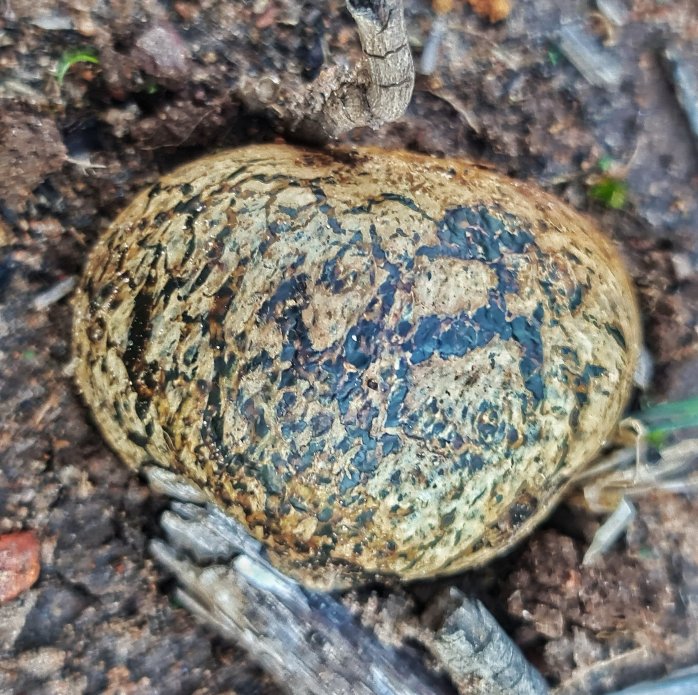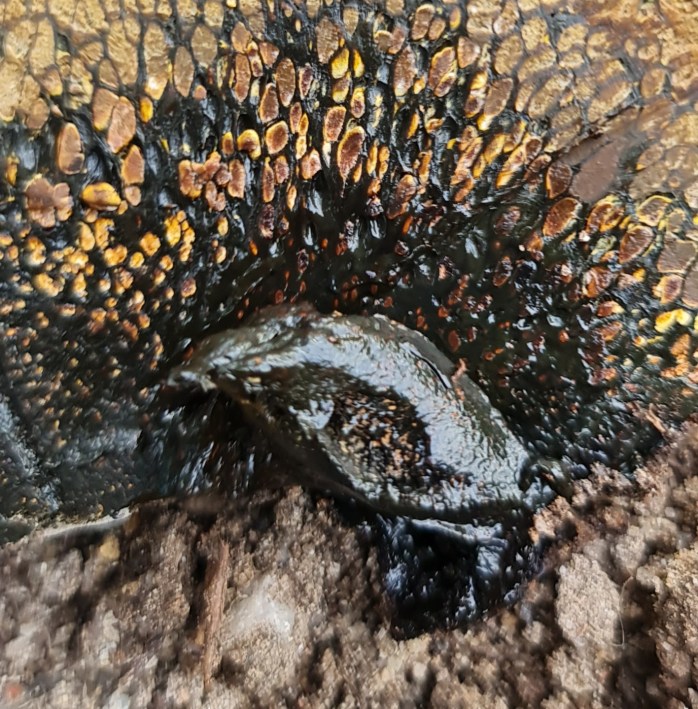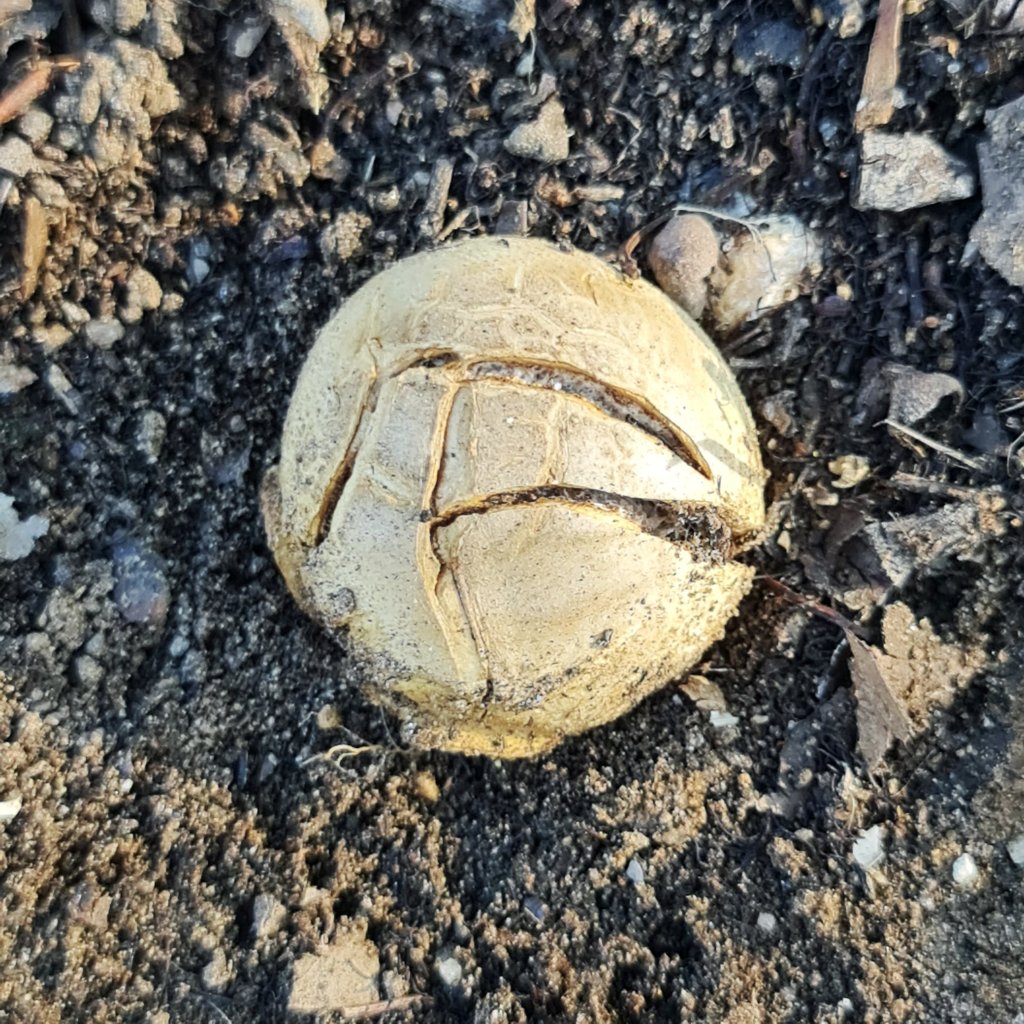
Phylum: Basidiomycota. Class: Agaricomycetes. Order: Boletales. Family: Sclerodermataceae
Inedible Pisolithus arrhizus is a very common fungus around Gawler and can often be found on the side of paths and roads. It’s common name, ‘Horse Dung Fungus’ comes from the look of the fungus as it sits by the side of paths, often in small groups, just like a pile of horse dung. The second, common name. ‘Dyeball’ comes from the fact that the viscous gel inside can be used to make a dye and it’s because of this that you’ll also see it listed as Pisolithus tinctorus.
I has a very distinctive look. The outside of the body is smooth and shiny, with an irregular dark pattern. It dries and splits as it matures and eventually dries out to a dry mass of spores, drying from the top down. This process can take weeks and dries and powdery blobs of Pisolithus can be found on the side of paths for almost a month.
If you cut an immature specimen open, you will see that the flesh is shiny and black and has interesting patches of yellow/gold which are many separate compartments known as ‘pseudoperidioles’, within which the fungal spores develop.
As a dye –
- Fresh – red-brown/black
- Dry – golden brown
- With Alum + iron as a mordant — chocolate brown
Pisolithus arrhizus is technically inedible, though you may see it listed as edible because, in Europe, small amounts are used to give food a truffle-like flavour, leading to another common name, “Bohemian Truffle”.
Pisolithus arrhizus forms associations with many plants and spores of it are used as part of an inoculant mix to help remediate degraded soil. You’ll often see it popping up along pathways and walking trails.



Identifying Horse Dung Fungus (Pisolithus arrhizus)- a summary
If you see something that looks like horse dung and it isn’t, look for these features –
- Dark, shiny skin with black mottling in young specimens
- Dry, split skin in older specimens, deteriorating to a brown mass of powdery spores that can remain for weeks
- Cut specimens show black flesh with yellow/gold pseudoperidioles
- A black goo forms inside
- Dyeballs can be found along parks and roads and can be found to burst through the surface of bitumen and gravel paths.
- No obvious mycorrhizae
- When mixed with water, the flesh makes a pink/brown dye.

Look alikes


